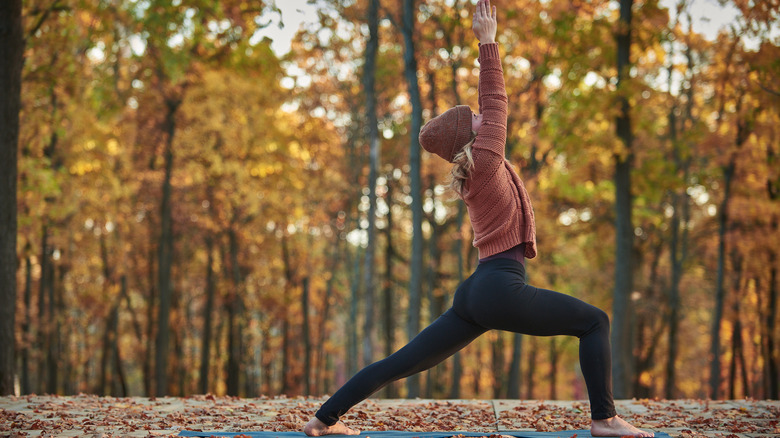What Is Cold Yoga?
There are countless yoga variations out there, each with their own unique benefits. Some, like hot yoga, promise to work up a sweat and help you burn off the pounds. And fans of the practice are quick to rave about it. But it's not for everyone. Some people don't do well in high heat. Others can't stand dripping sweat that makes their skin sting. These people would probably prefer to work out in a briskly cold room rather than a sauna.
The good news is that they can. And even better than that, there is some evidence that cold workouts may have their own unique benefits. In the case of cold yoga, those benefits could make the difference between a good stretch and a fat-blasting workout.
You may be skeptical. After all, fat leaves the body as sweat. At least that's what many people are told. But according to a 2014 study published in the BMJ, a medical journal published by the British Medical Association, most fat doesn't leave the body through sweat. Instead it leaves our body as CO2, also known as carbon dioxide. The report found that when someone loses 10 kg of fat, 8.4 kg of it leaves as CO2. That means 84% of fat loss is through the lungs, not through sweat. And that's great news for people interested in cold yoga.
What the science says
The practice has been largely publicized by the company Brrrn. They offer cold classes in their New York studio and have given several interviews about their yoga practice. One interview was with Yoga Journal in 2018. Co-founders Johnny Adamic and Jimmy Martin explained why they chose to go with cold yoga over other variations.
Adamic, a nationally certified personal trainer with the National Academy of Sports Medicine and a former Bloomberg Public Health Official, explained that the sweat and the heat of exercising in hot rooms make people feel like they're working harder than they really are. But when they exercise in a cold space their bodies strive just to keep their core temperature up. This, Martin added, reduced the amount of sweat and the perceived exertion so people end up working harder.
There's some science behind their reasoning too, beyond observations they've made about their clients over the years. A 2007 report in Medicine and Science in Sports and Exercise found that marathon runners of all sexes and ability levels slowed down as ambient temperature went up. They performed better at 41 degrees Fahrenheit and grew progressively slower until the ambient temperature reached 77 degrees Fahrenheit, roughly speaking, as the study was performed in Celsius.
Brrrn keeps their yoga studio between 40 and 64 degrees Fahrenheit, hitting that sweet spot to induce "mild cold stress," as Adamic put it. At this temperature the body burns calories faster as it tries to stay warm. It's a unique approach to weight loss and fat burn yoga that might just catch on for those who want to skip the sweat.


